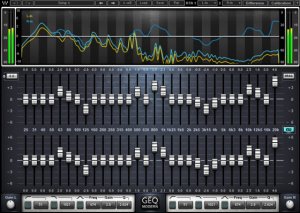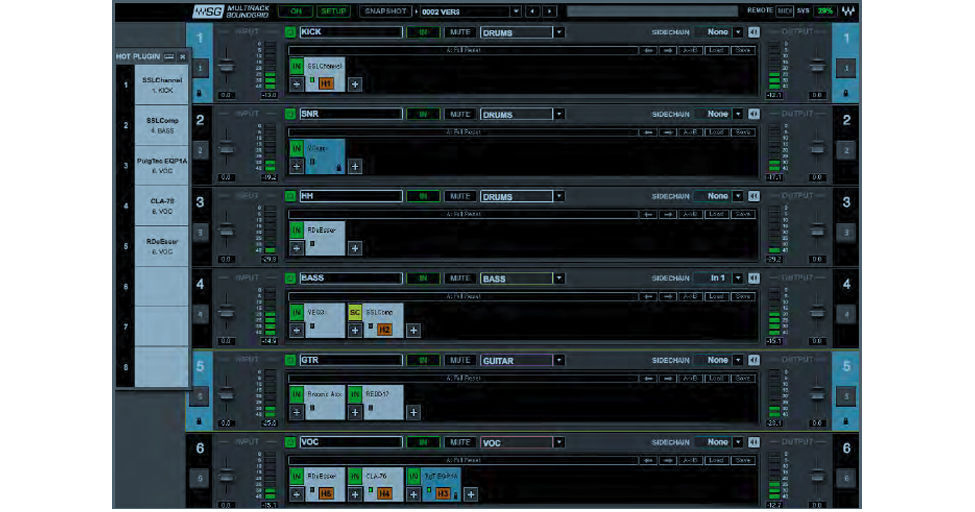

The I/O device converts SoundGrid packets to standard and proprietary audio protocol schemes. Audio is transported and routed between networked I/O devices and is processed on plugin servers connected to the same 1 Gbps Ethernet network. SoundGrid is a proprietary ‘Ethernet Layer 2 Protocol and EtherType’ Audio-over-Ethernet networking and processing technology developed by Waves. I wish I knew exactly how it processed the audio so I could explain it, but it is pretty awesome! We can get a glimpse to how complex of a system it is by some of the explanations by Waves:

Waves was able to overcome this latency issue by creating SoundGrid. On a side note, when I last tried to use Waves MultiRack with my older computer I was needing to run a buffer of 512 to have no audio glitches which yielded 10.67 ms of delay. Because it is like you just moved the band back 5 feet or so. If you are running FOH, having 5 ms of delay isn’t that much of a problem. This delay can tend to cause off pitch singing, which is never a good thing. While it doesn’t seem like that much time, you WILL hear the difference between your ‘head voice’ and your ‘ears’ hearing the monitors. More so when those monitors are in-ears! Imagine singing into a microphone and then hearing yourself 5ms later. This delay becomes a problem with monitors mainly. So we are talking 5.18 ms of delay without ANY plugins even inserted! However, the higher the buffer, the longer the delay will be.īasically, you have to have a REALLY fast computer to be able to use MultiRack Native with a low buffer.īut even with low buffers of say 192 samples, this is still going to be 4.35 ms on top of the. A really basic explanation of buffer is ‘the amount of signal that the computer will capture before processing it.’ The higher the buffer, the less processor load and the more stable the audio.

When you use a computer to process the audio, you have to have a buffer inside of the DAW or MultiRack Native. It is when you add in the use of monitors where this is not a good idea and let me explain why. This is an interesting idea and a lot of people have successfully used this setup when mixing their console at FOH. Now, what about using the X-USB card and then MultiRack Native or using my DAW (digital audio workstation) to insert VST plugins. So, when we look at this, if we added the Wave Designer as an insert to the snare channel, the total time it would take for the snare microphone to output the PA system would be 0.83 ms + 1.42 ms = 2.25 ms. This processing is dependent on which ‘effect’ you are inserting, but all of the effects range from adding 0.67 ms to 1.42 ms. When you add in and ‘insert’ an effect from one of the 8 internal FX racks of the Behringer X32 and Midas M32 you will add a bit of delay due to extra processing. What about adding in the internal FX Racks?

This time includes all of the internal, non ‘Effect Rack’, processing. Input to Output with A/D & D/A Conversion Time The Behringer X32 and Midas M32 have really low latency, in fact the total time to process from an analog signal to digital, process the audio internally with dynamics, eq, summing on busses, adding more dynamics and eq, then converting back from digital to analog to send to your PA is only 0.83 ms! It takes time for those IC’s to convert the voltage to 1’s and 0’s. In the digital world, the latency comes from conversions from Analog to Digital (A/D) and from Digital to Analog (D/A). Behringer X32 In/Out Latencyįirst off when we are talking about latency, what are we really talking about? In the Analog world, latency wasn’t as much of a problem because our audio would pass through a bunch of resistors, capacitors, and potentiometers (aka nothing that will delay the audio). I wanted to do some latency testing with the Waves X-WSG & Waves SoundGrid to see how much delay using this system will add to the Behringer X32 & Midas M32. If you didn’t see last week’s post, go check it out! I have teamed up with Waves and it is pretty exciting!Īs always I love really diving into the nitty gritty details of how things work.


 0 kommentar(er)
0 kommentar(er)
